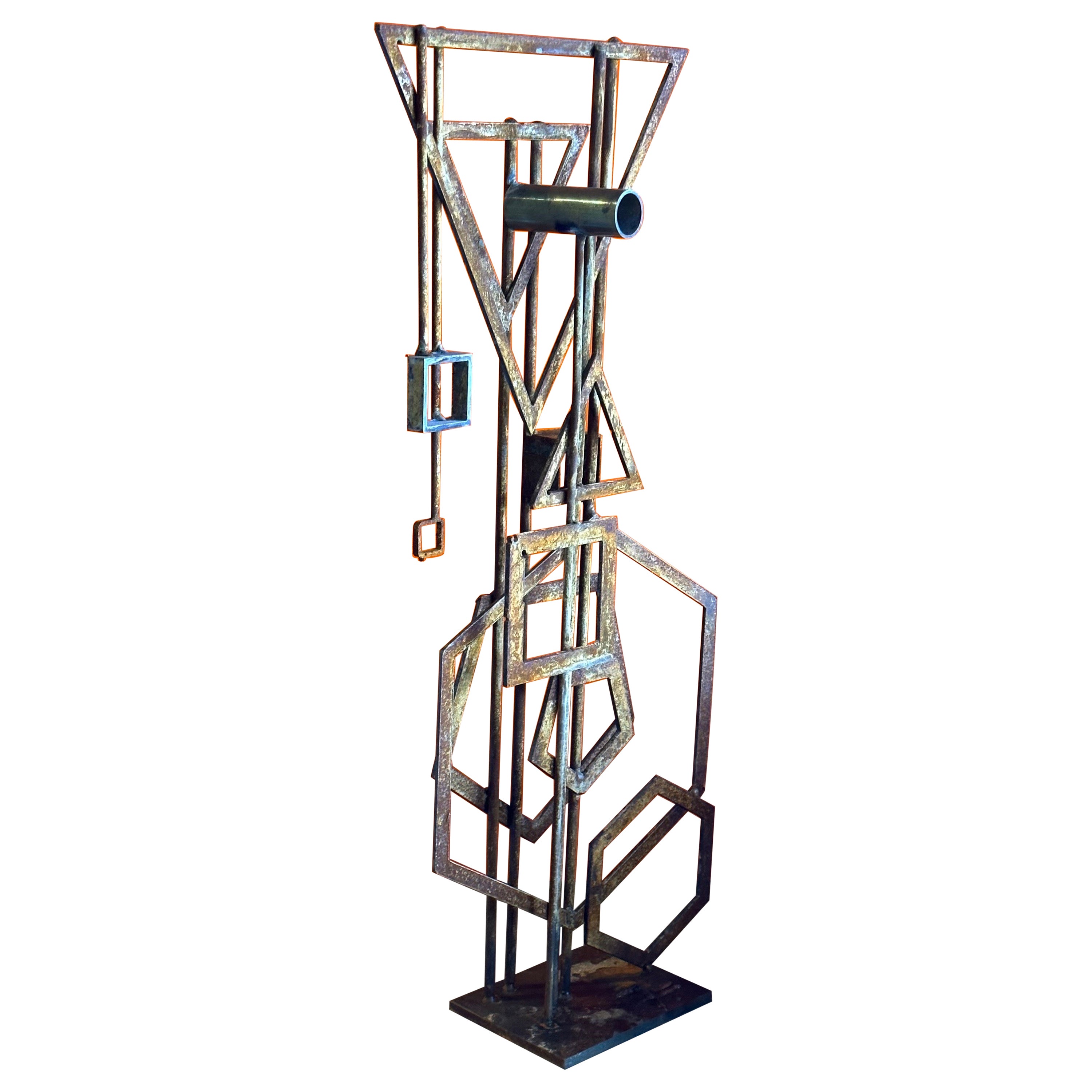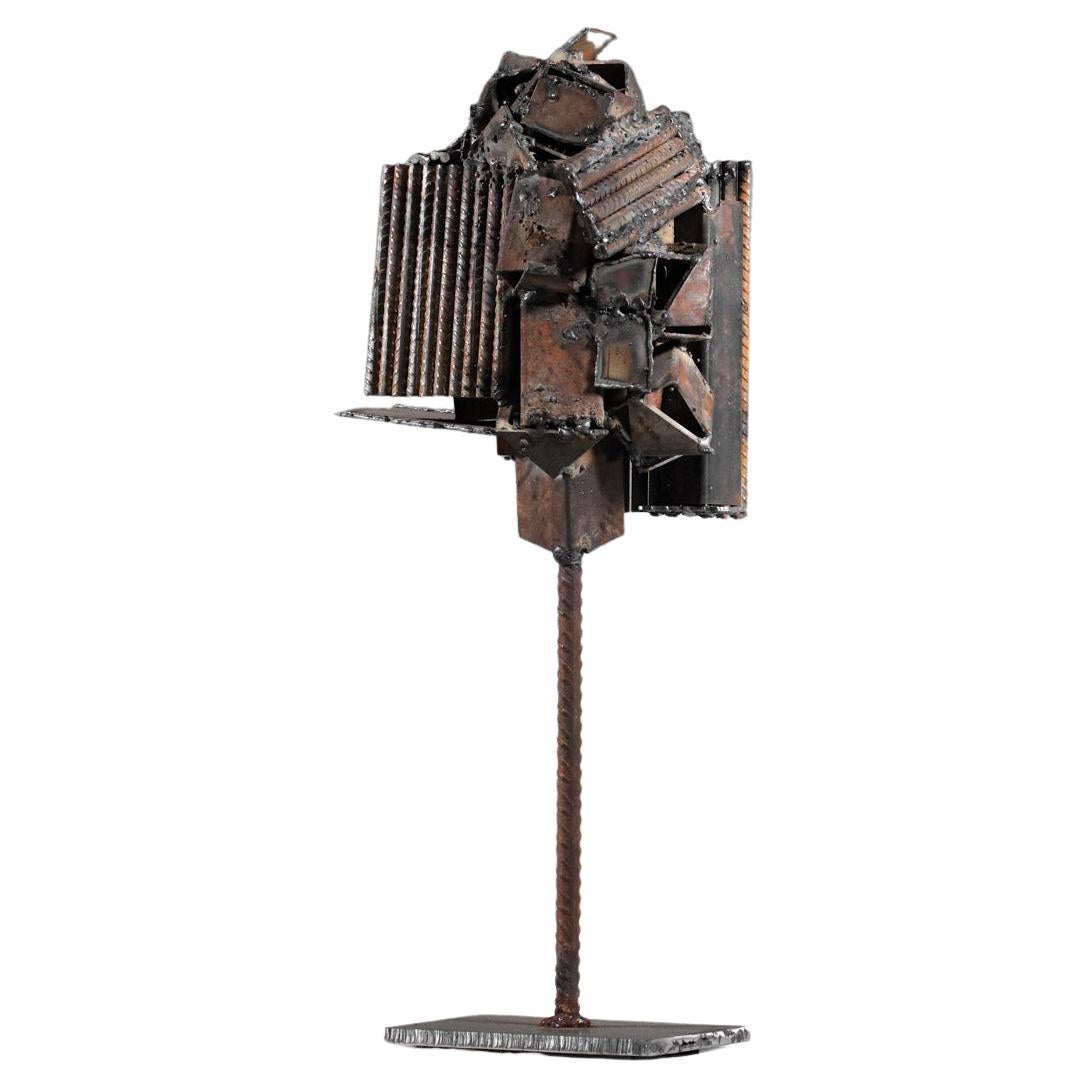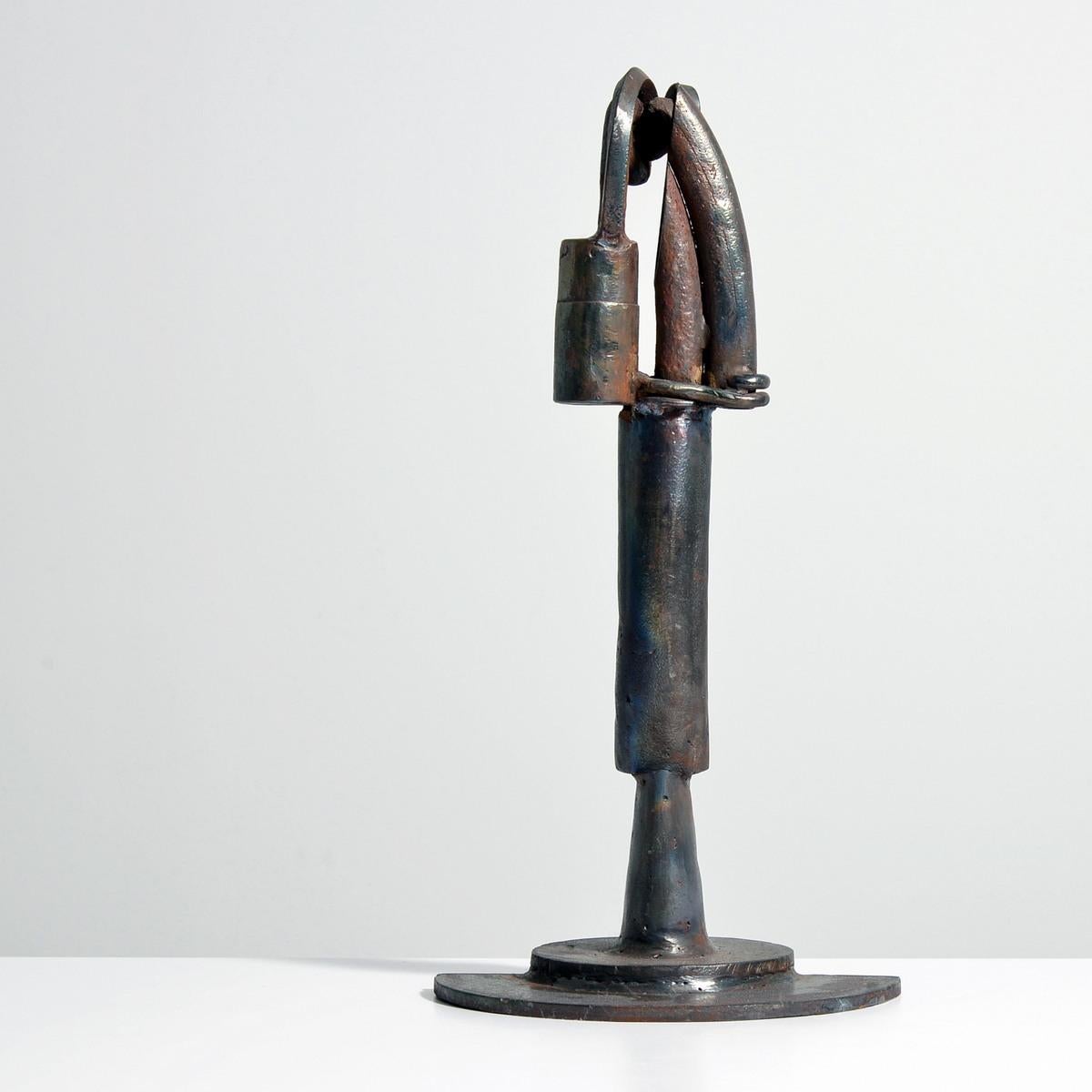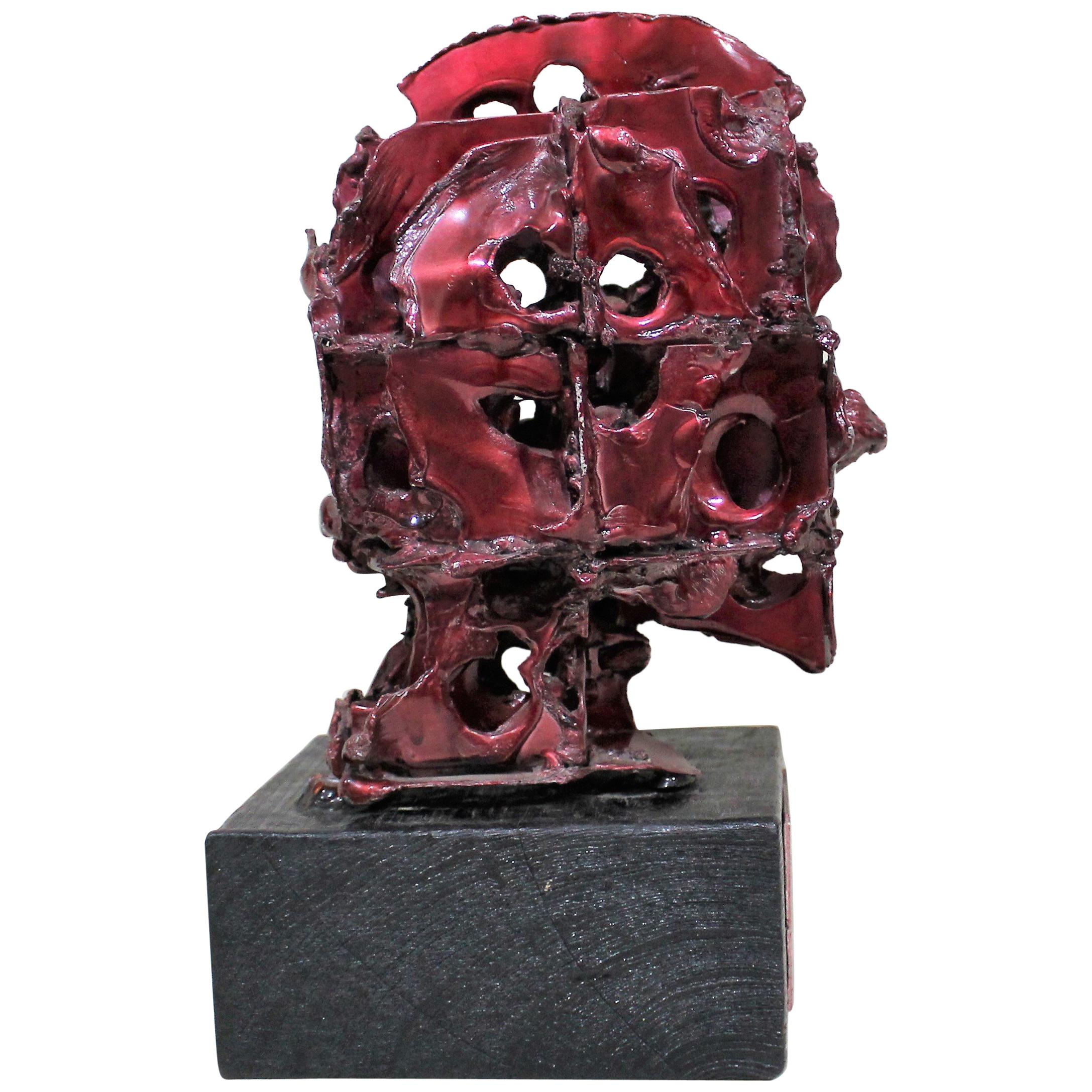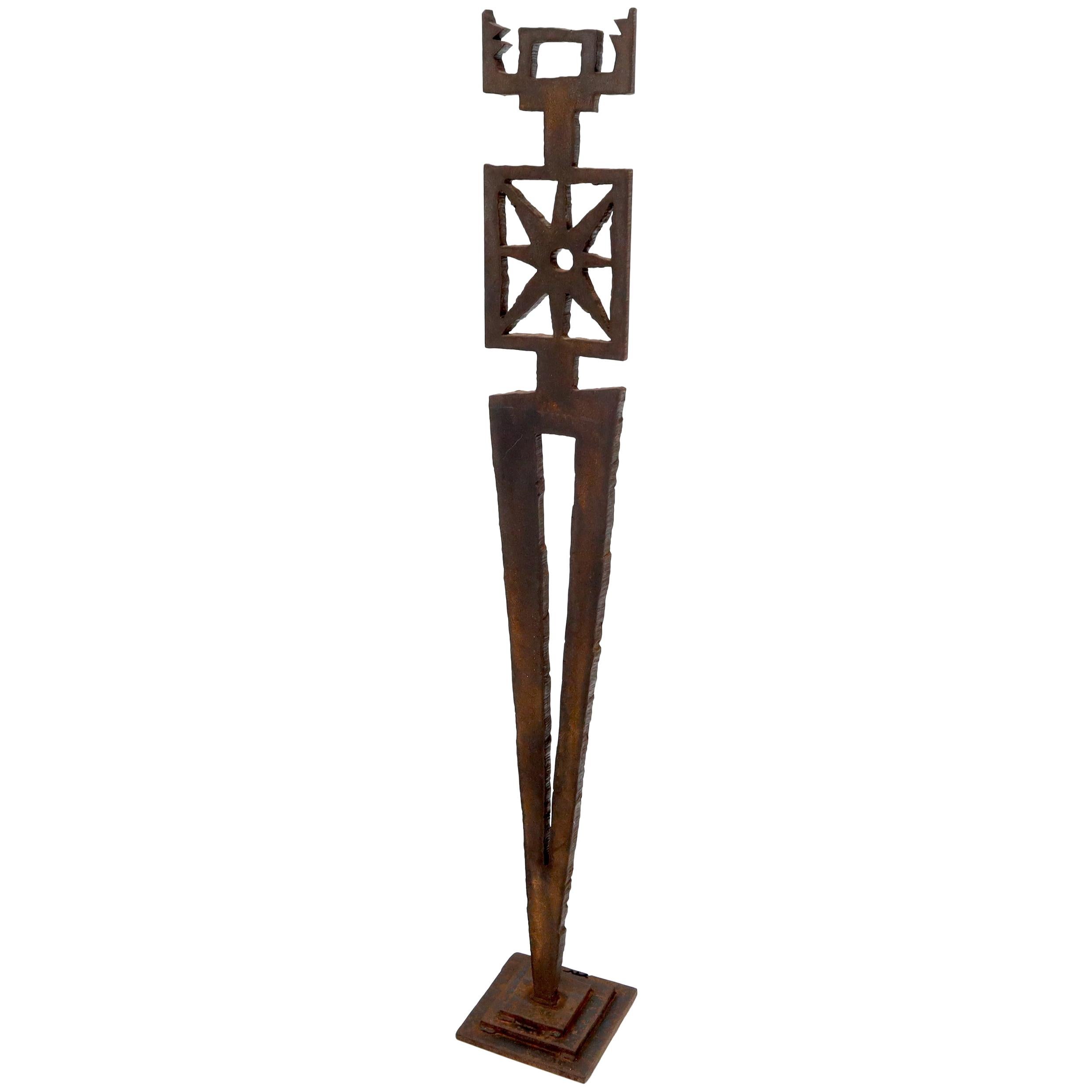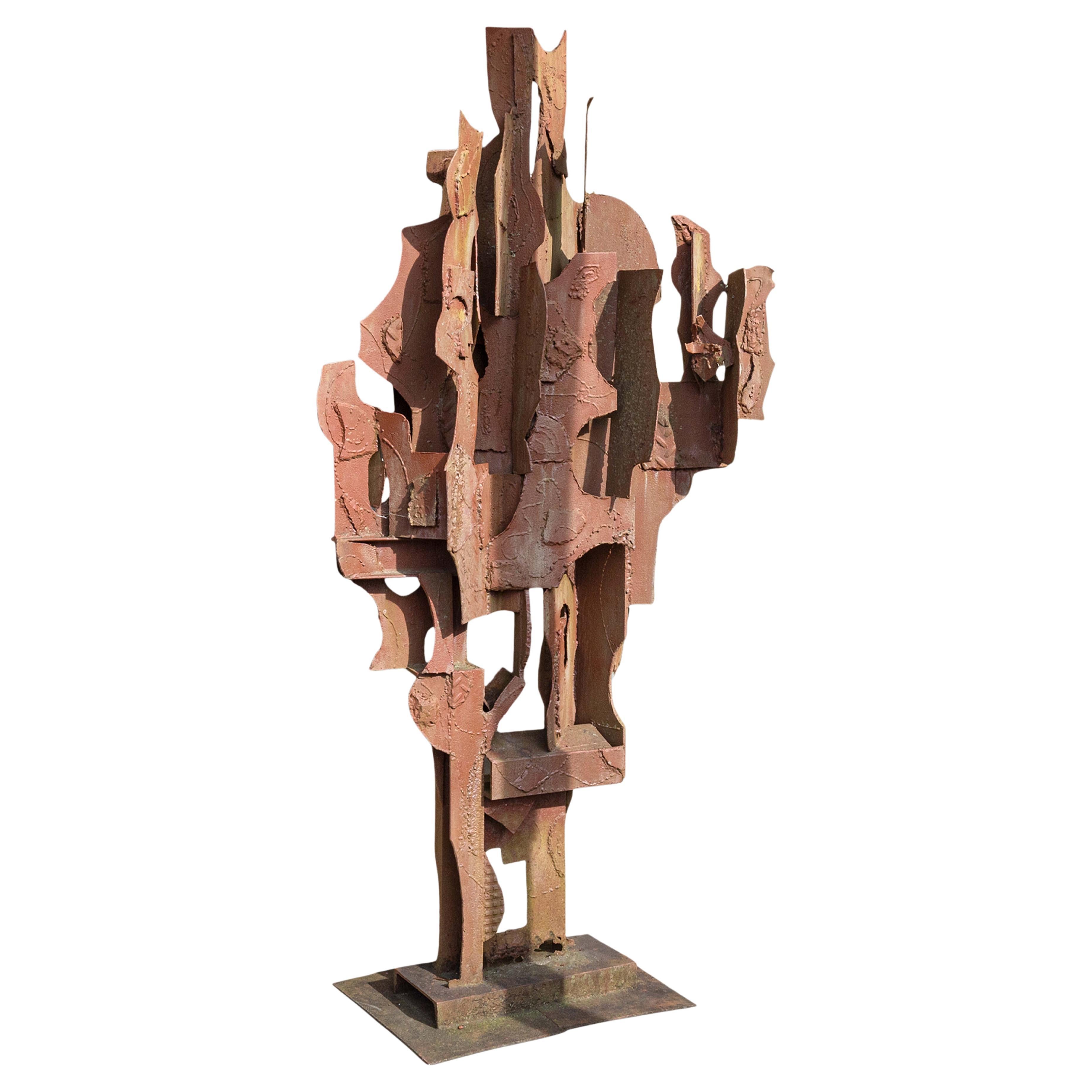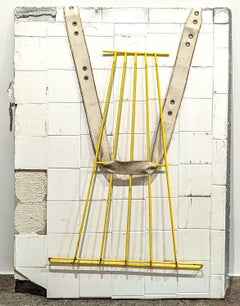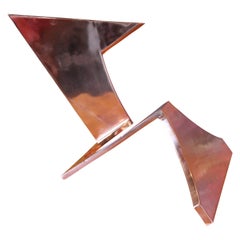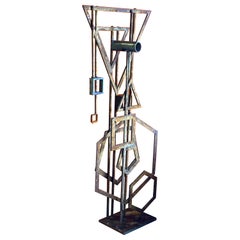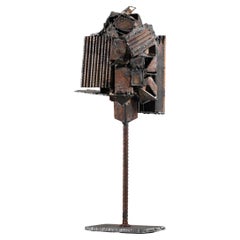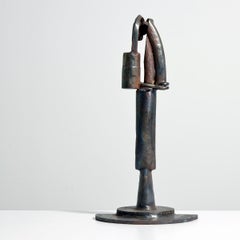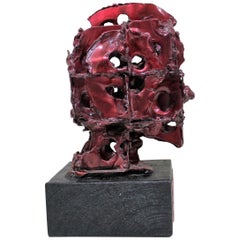Bob FowlerModern Brutalist Metal Sculpture of an Abstract Skeletal Figure in a Locker1960s
1960s
About the Item
- Creator:Bob Fowler (1931 - 2010, American)
- Creation Year:1960s
- Dimensions:Height: 12.5 in (31.75 cm)Width: 7.5 in (19.05 cm)Depth: 6.88 in (17.48 cm)
- Medium:
- Movement & Style:
- Period:
- Condition:Wear consistent with age.
- Gallery Location:Houston, TX
- Reference Number:Seller: A2022.0204.35021stDibs: LU55139773642
Bob Fowler
Robert (Bob) Knight Fowler, Jr. was born in 1931 in Houston, Texas. Bob was a celebrated artist and master sculptor. He began producing art at the age of nine, when he won a scholarship to the Museum of Fine Arts in Houston. He attended St. Thomas High School, graduated and went on to the University of Notre Dame, where he received a BFA in 1954. He continued his education at Mexico City College on a Good Neighbor Fellowship until 1958, when he returned to Houston. In 1963 he began working as a full-time sculptor. In 1966 he was the first American to win first place in the International Exhibit of Sacred Art Trieste in Italy. Notably his landmark sculpture, African Elephant, 1982, greets visitors at the entrance to the Houston Zoo. His public pieces are displayed in such diverse settings as concert halls (Jones Hall in Houston), universities, banks and community centers. Bob Fowler passed away in 2010.

- ShippingRetrieving quote...Shipping from: Houston, TX
- Return Policy
More From This Seller
View All1990s Modern Abstract Sculptures
Steel
2010s Contemporary Abstract Sculptures
Found Objects, Mixed Media
1980s Abstract Abstract Sculptures
Bronze
20th Century Abstract Geometric Abstract Sculptures
Copper
1970s Abstract Abstract Sculptures
Bronze
21st Century and Contemporary Contemporary Abstract Sculptures
Wood, Mixed Media
You May Also Like
Mid-20th Century American Mid-Century Modern Abstract Sculptures
Iron
Early 2000s French Brutalist Abstract Sculptures
Steel, Iron
20th Century Abstract Abstract Sculptures
Bronze
Mid-20th Century Brutalist Busts
Metal
20th Century American Mid-Century Modern Abstract Sculptures
Steel
Vintage 1970s American Brutalist Abstract Sculptures
Steel
